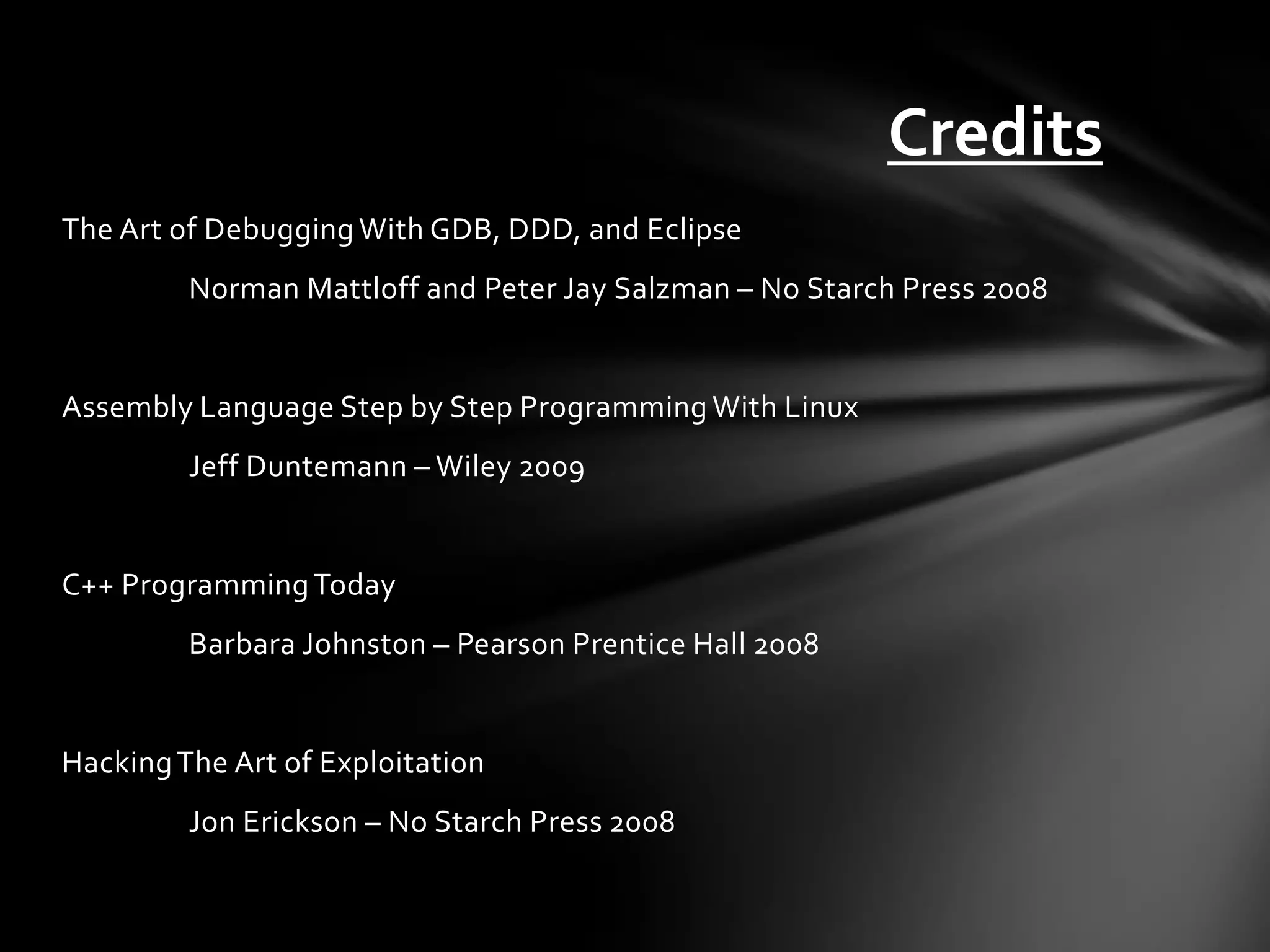The document provides an overview of ELF (Executable and Linkable Format) files, assembly language, CPU registers, memory addressing, basic assembly instructions, and debugging tools like GDB. It describes the sections and structure of ELF files, number bases, memory layout, common instructions, and how to use GDB commands to debug programs.
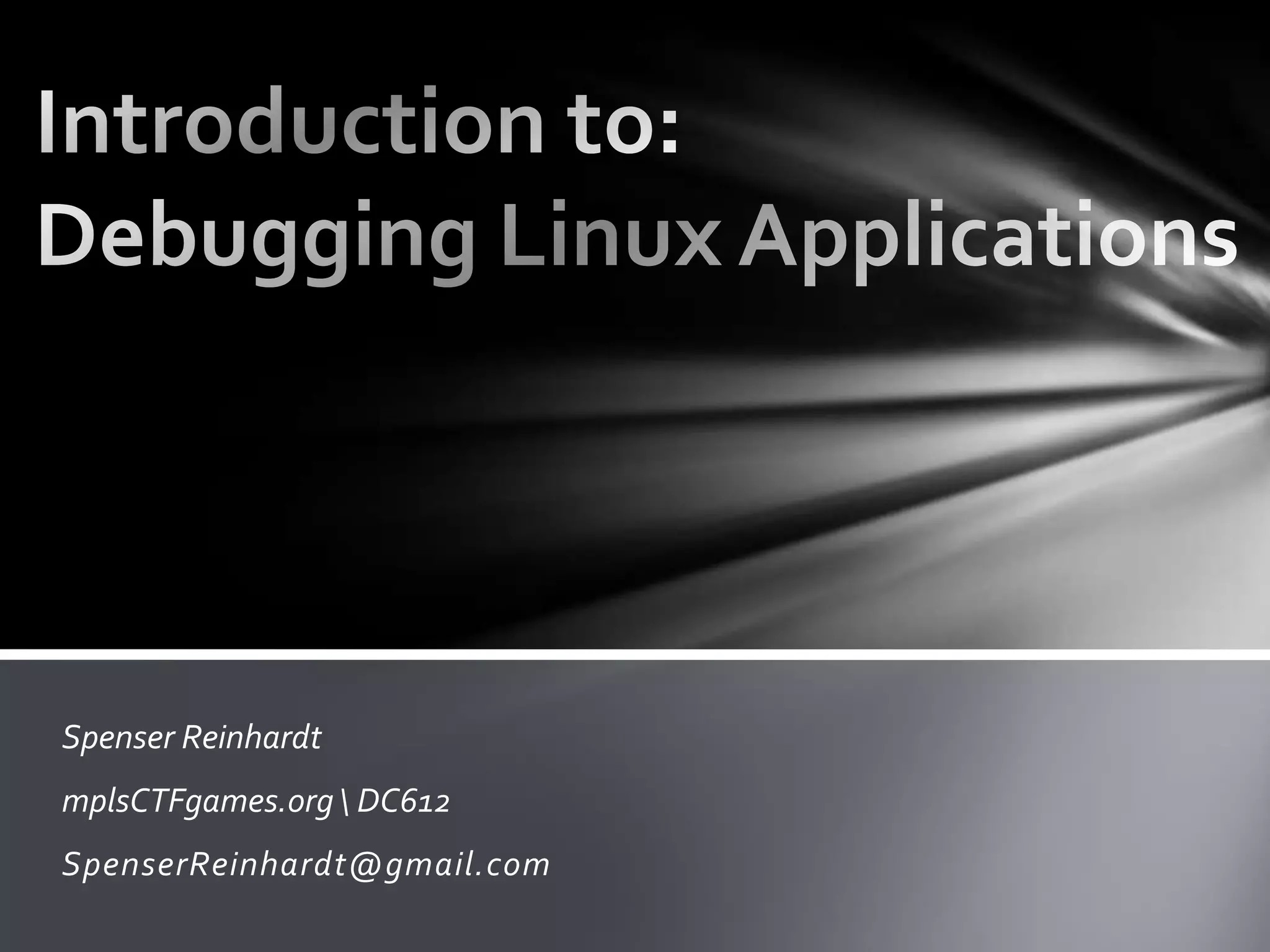
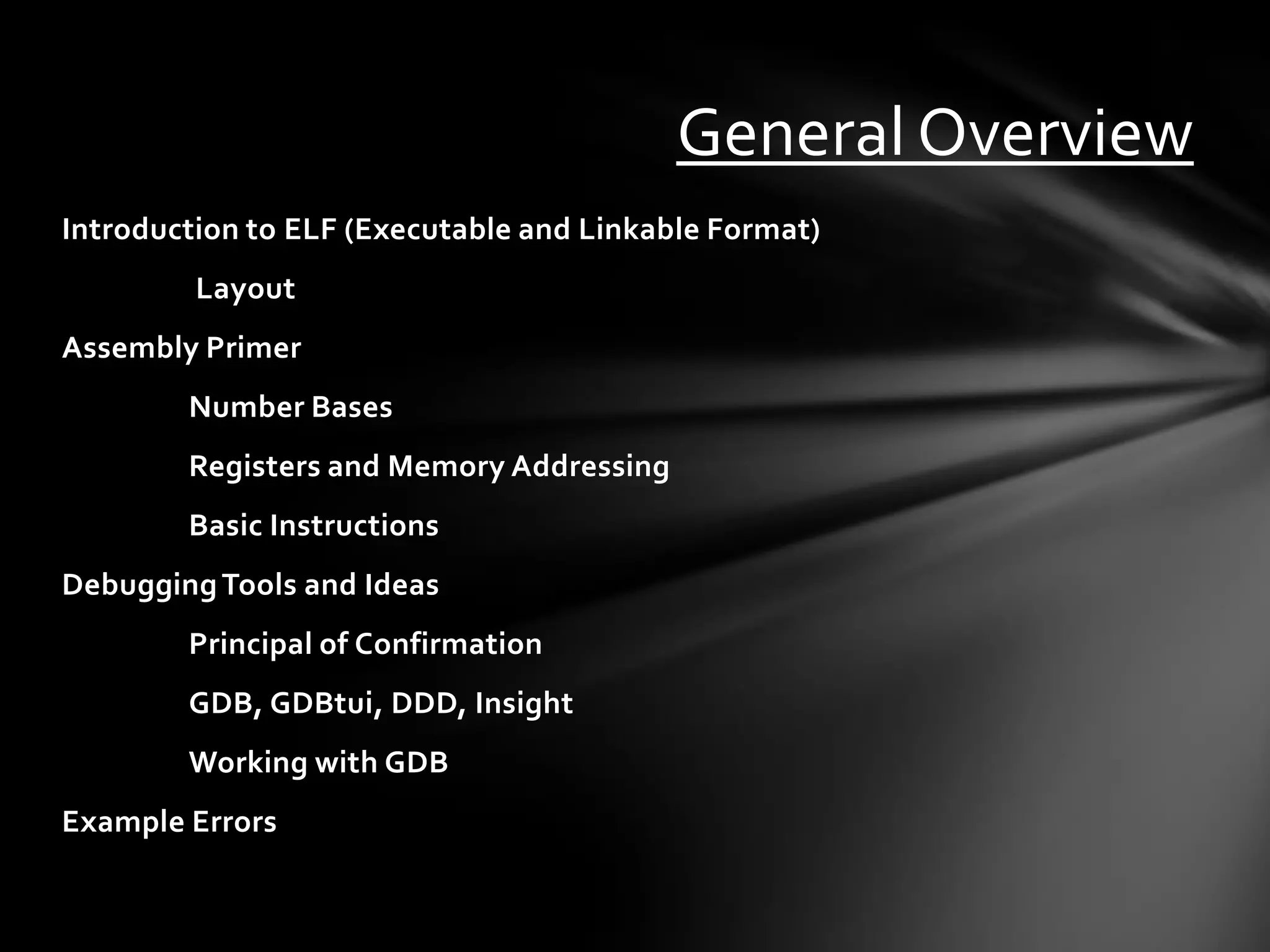
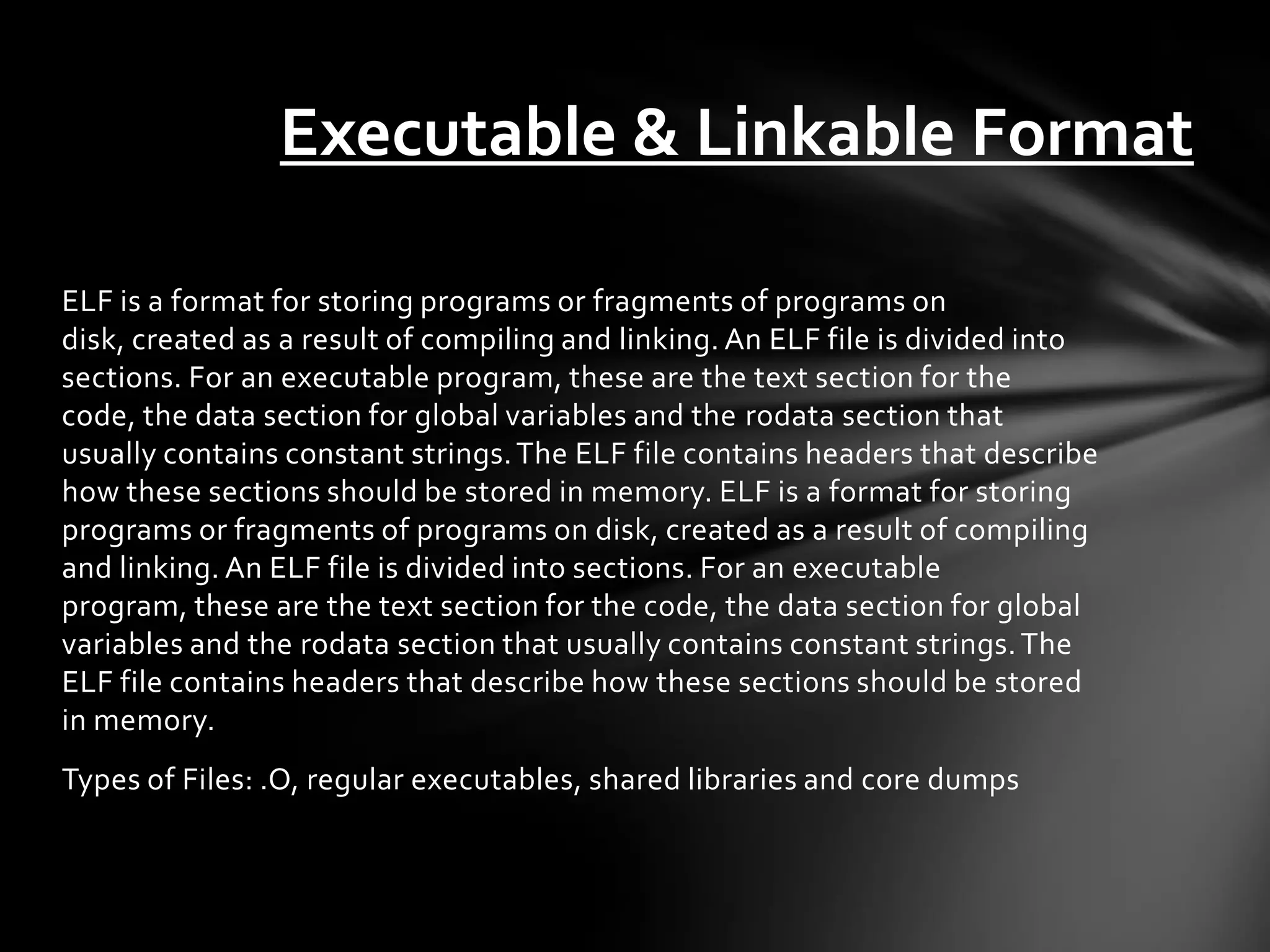
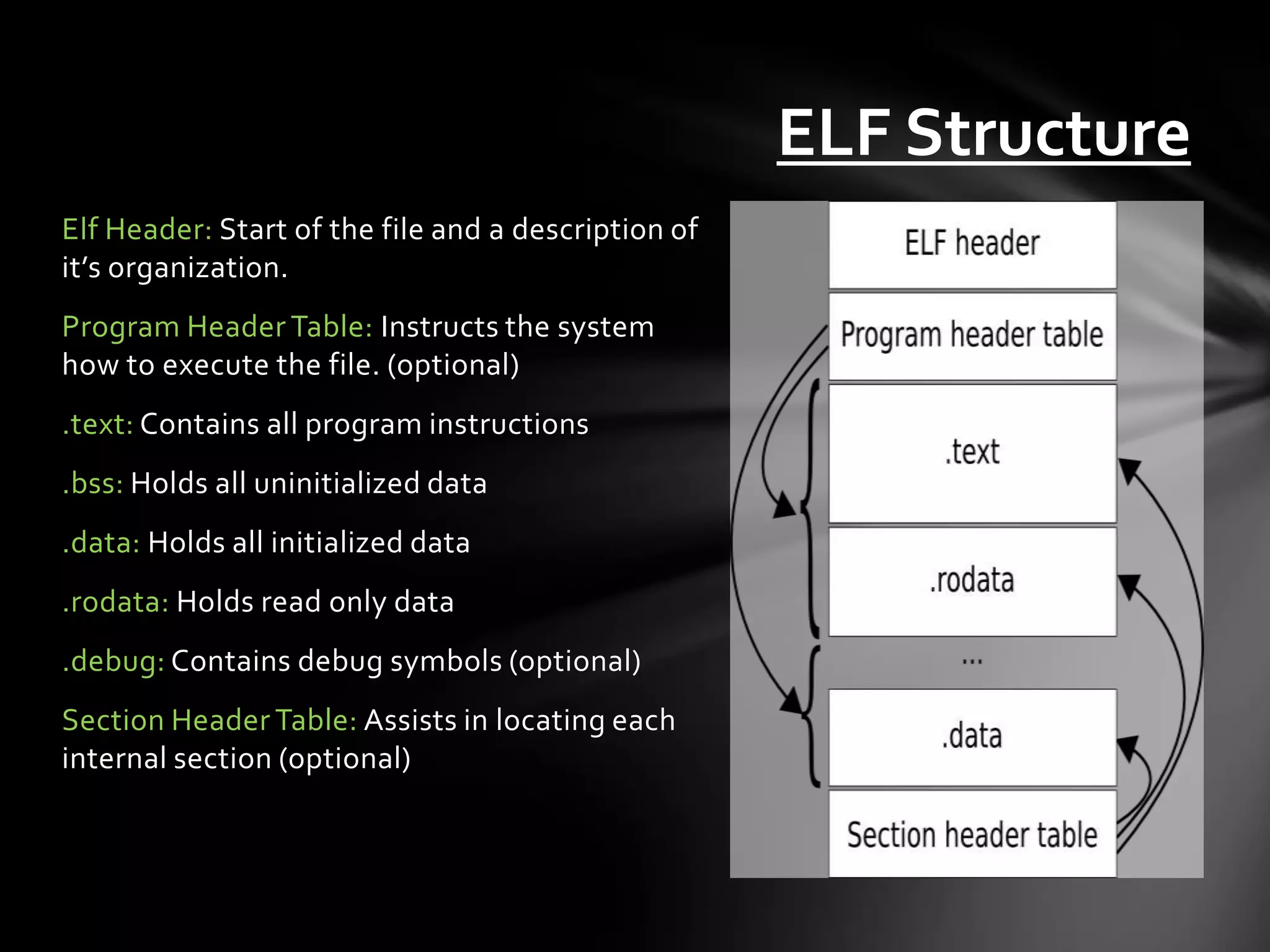
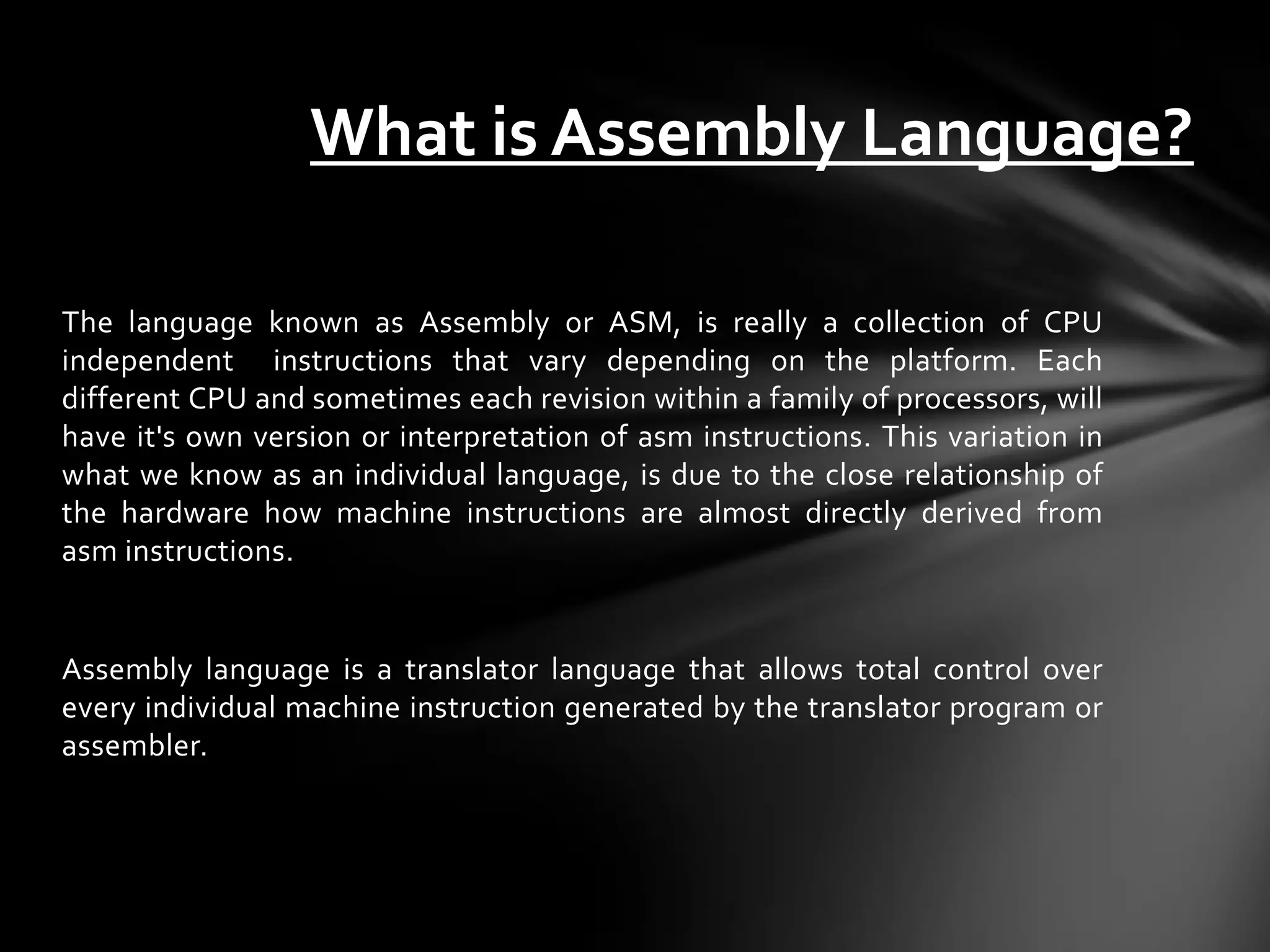
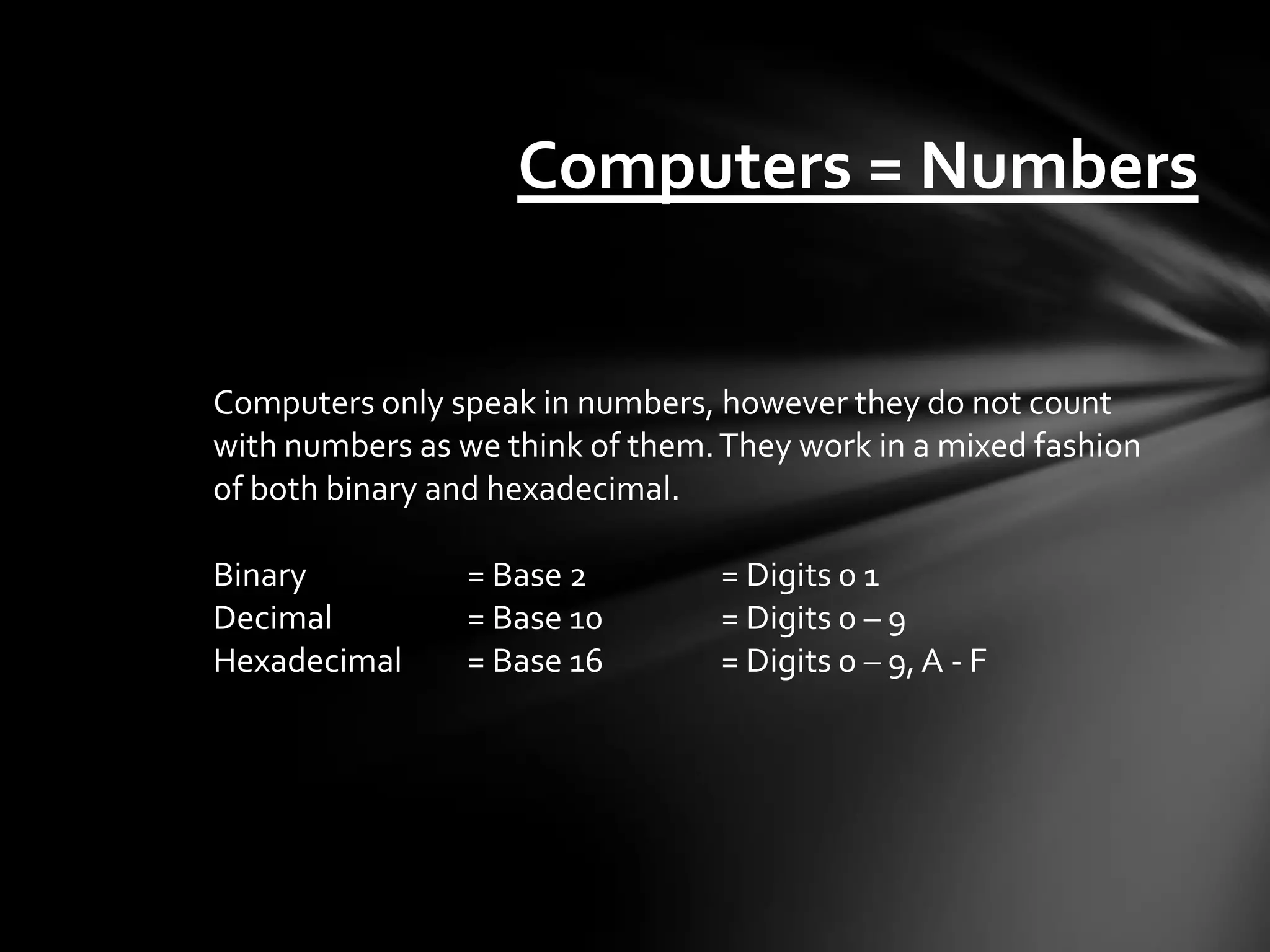
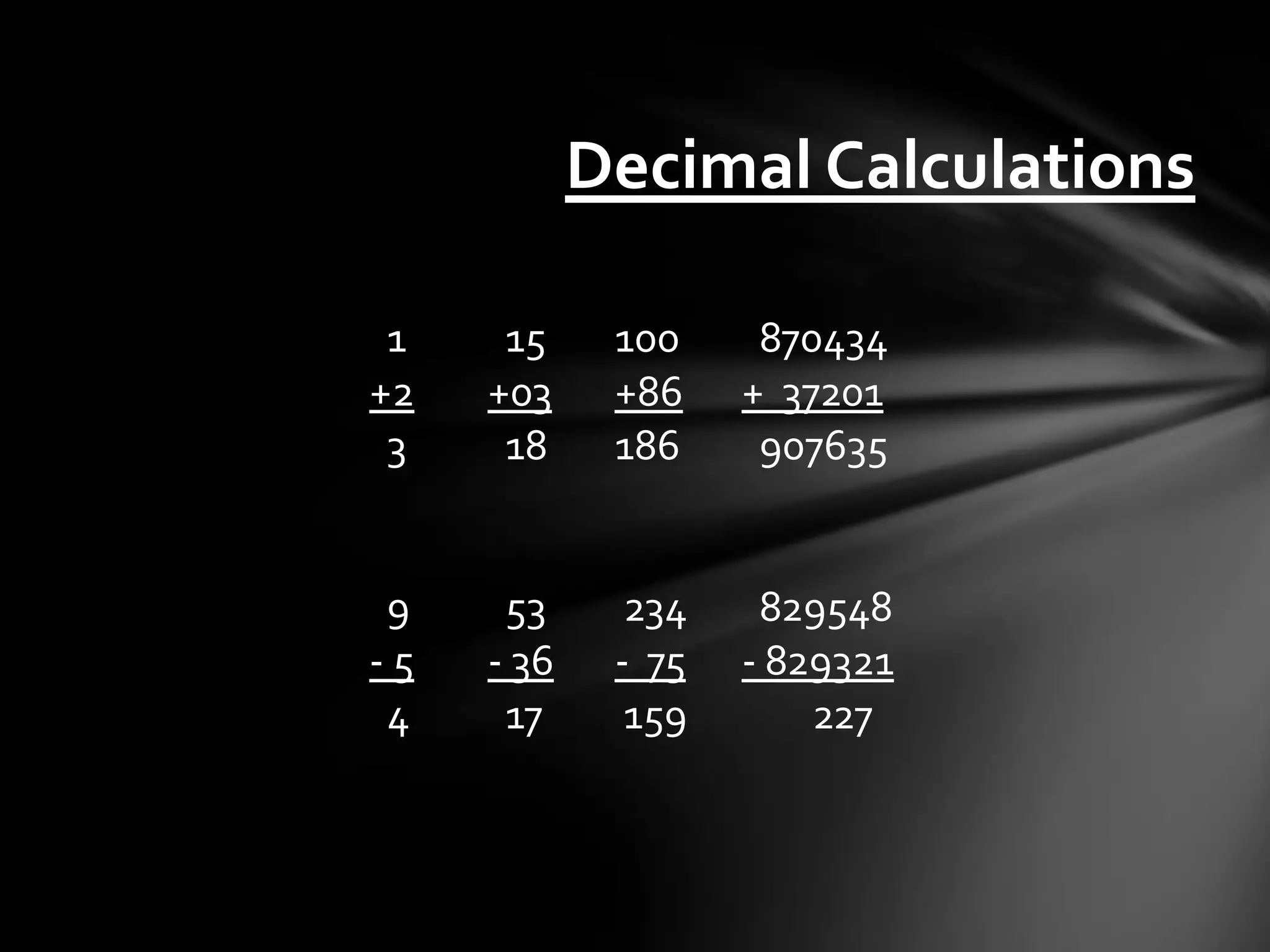
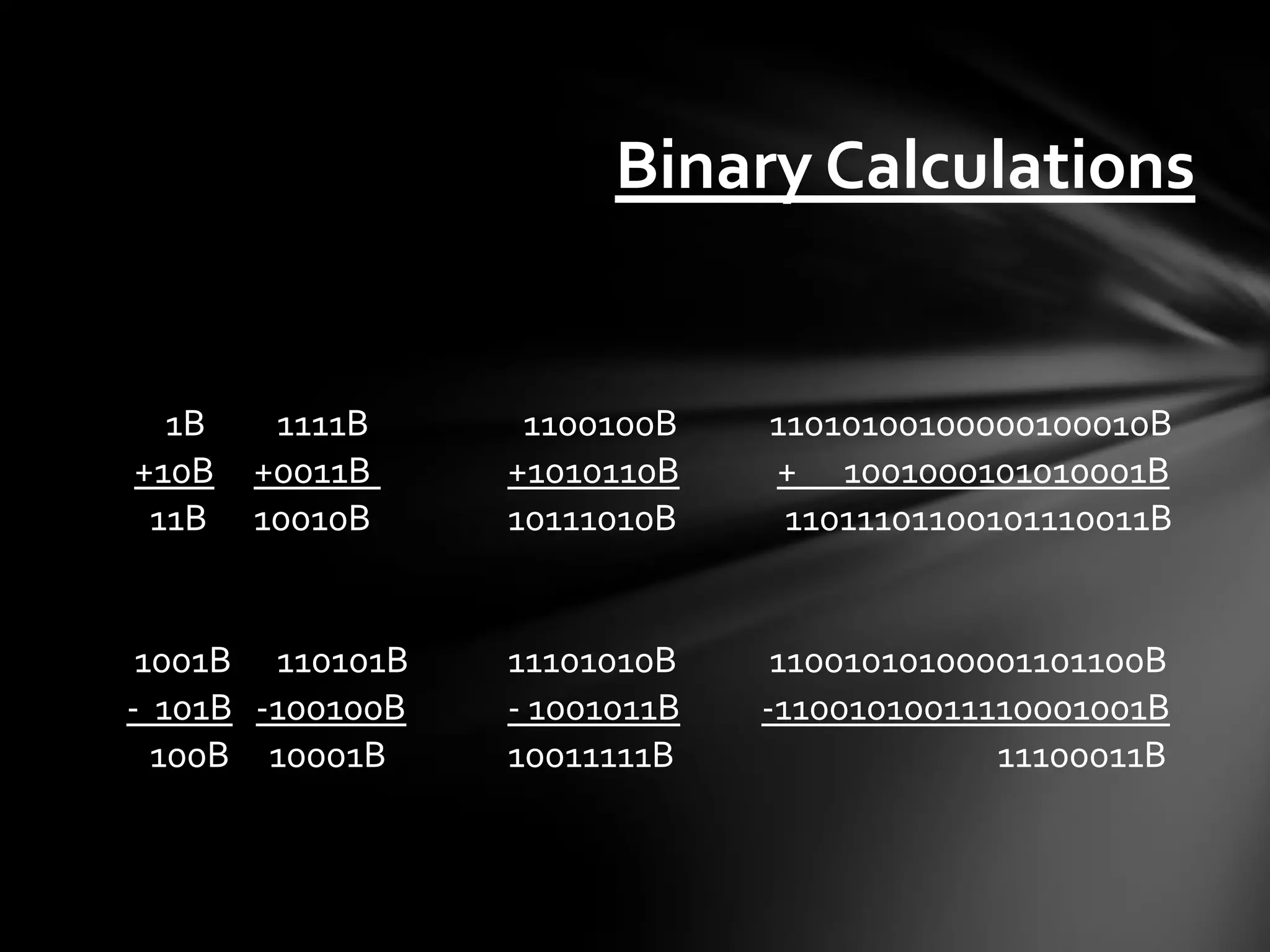
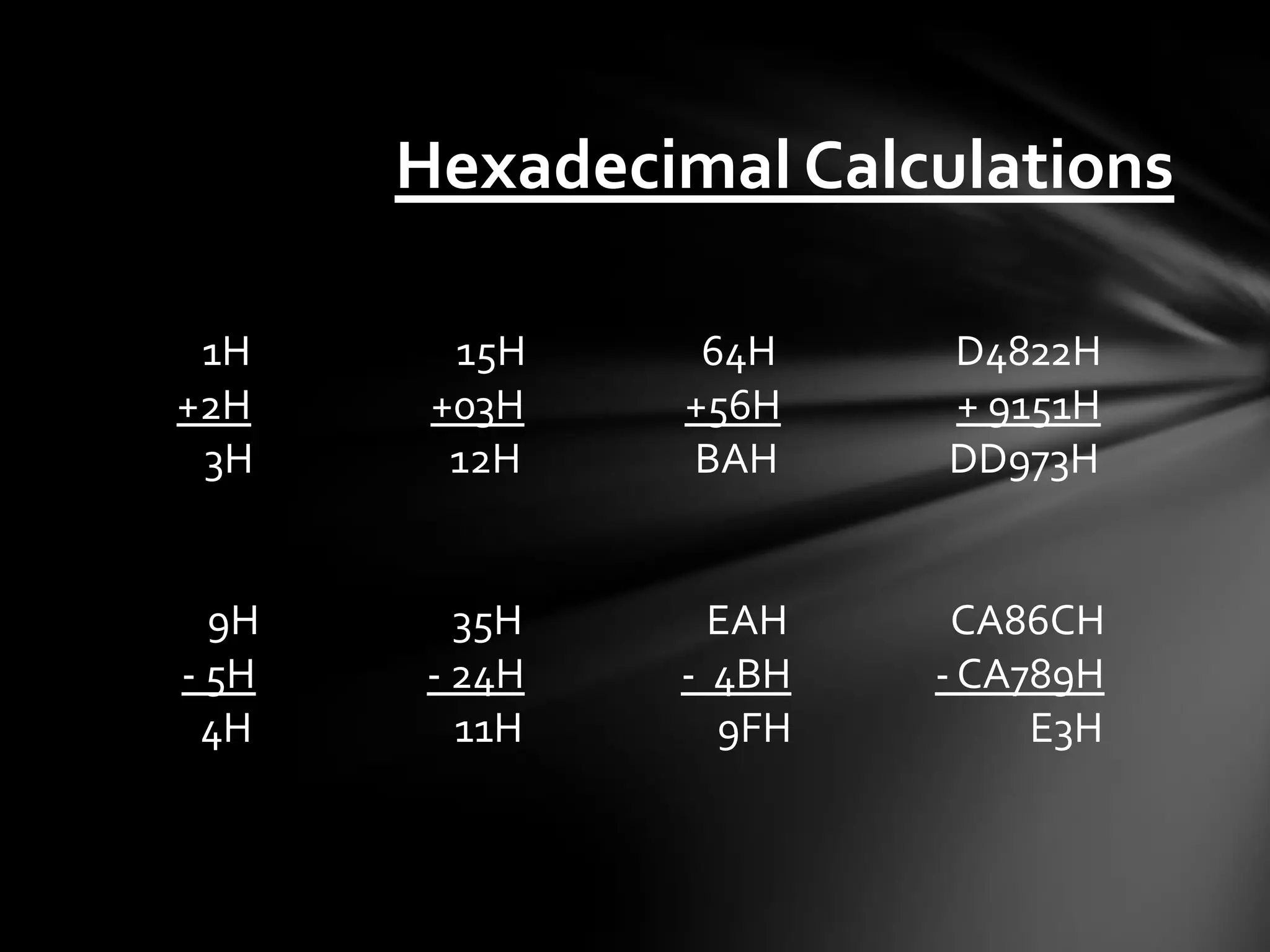
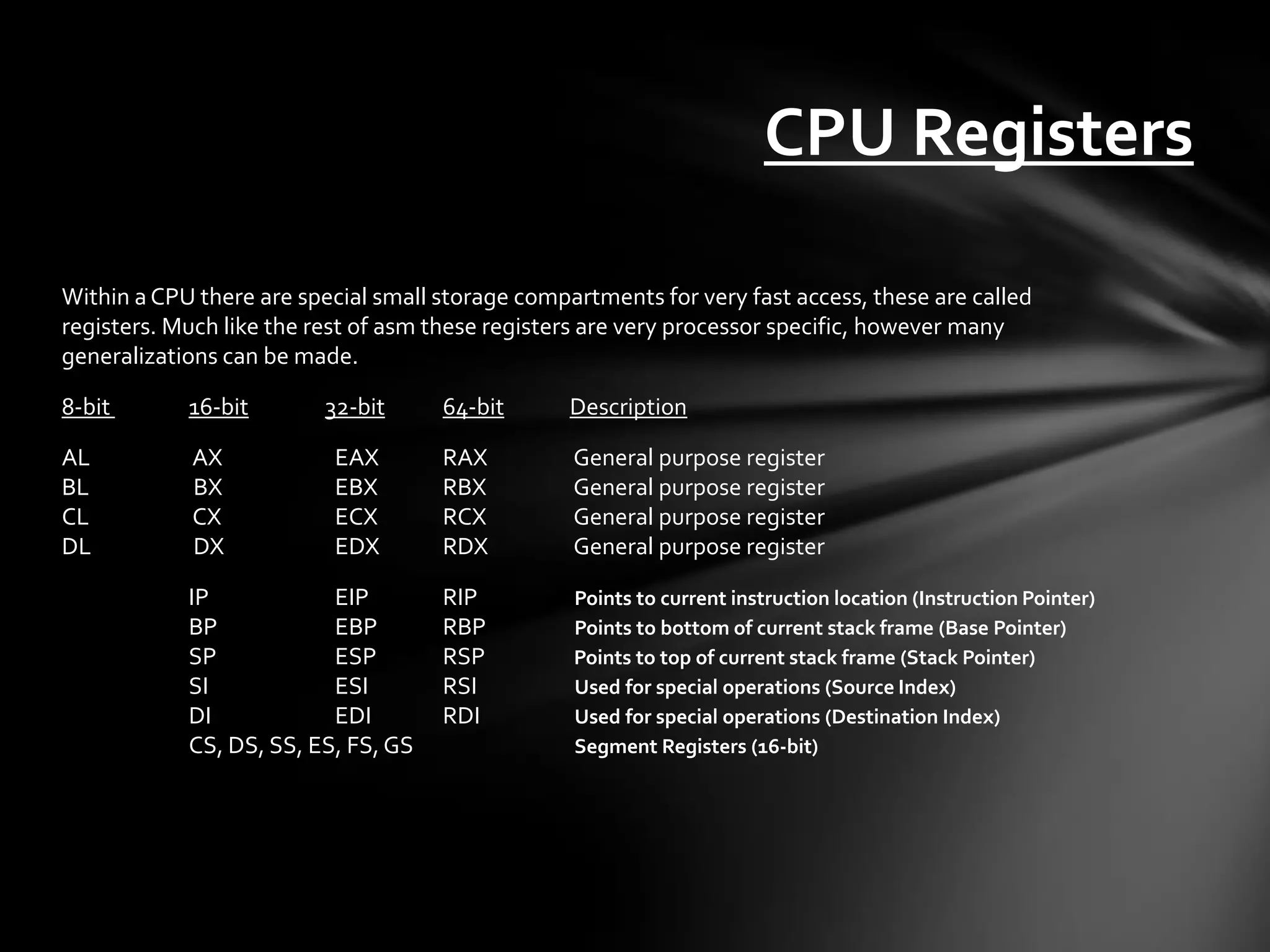
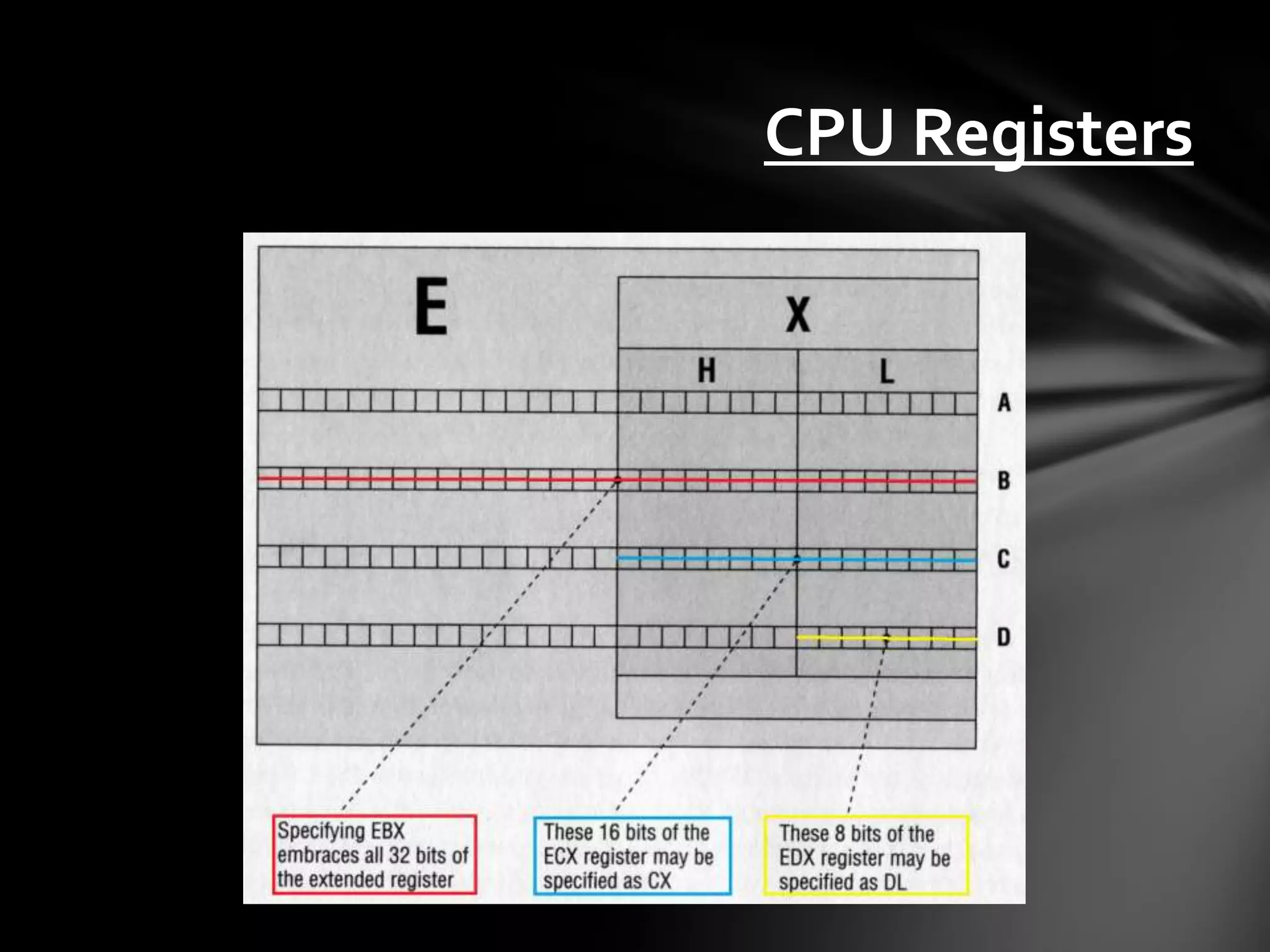
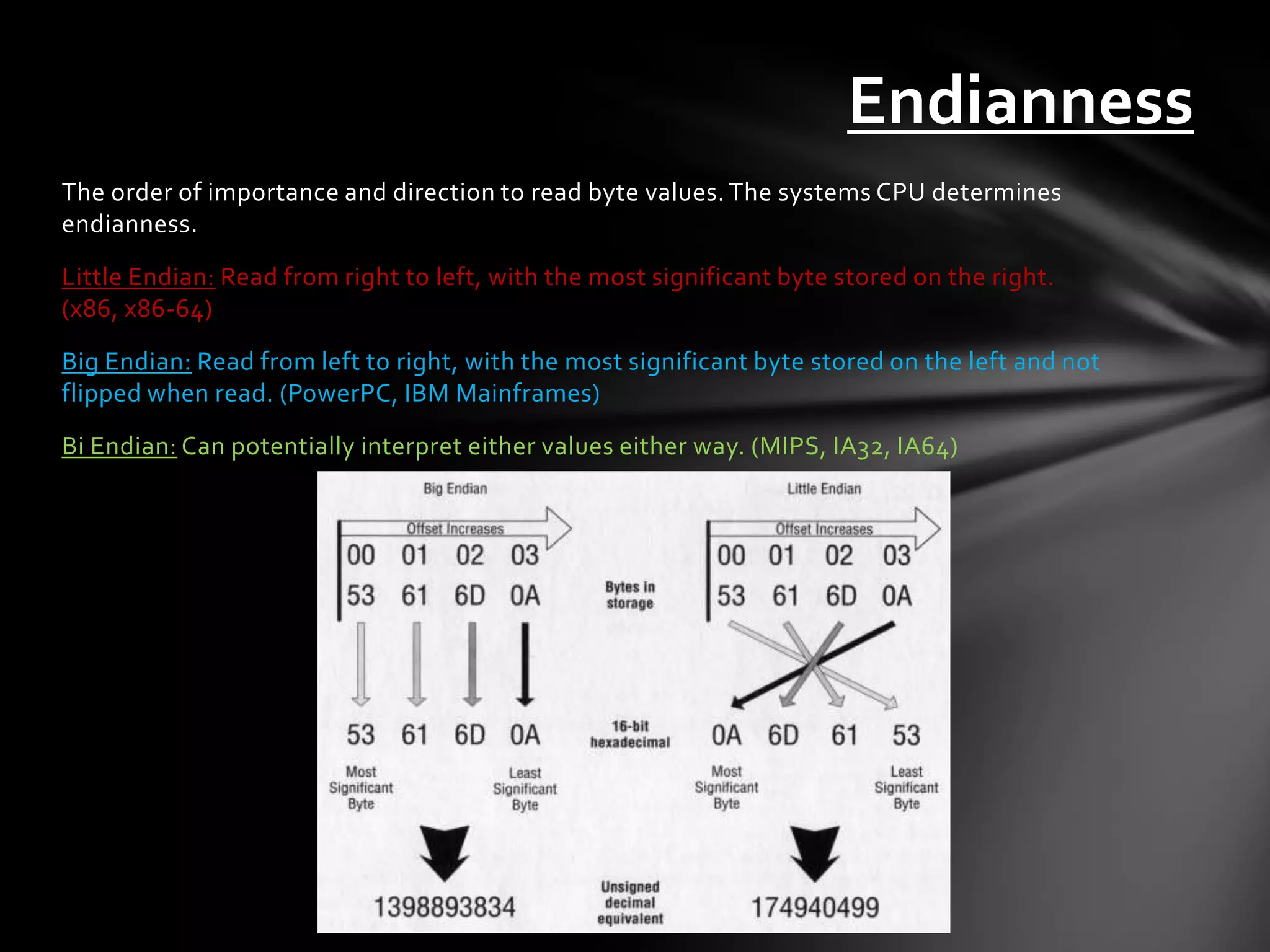
![The Stack
• Stores data temporarily as an application may need it.
• ESP = Top of the Stack EBP = Bottom of the Stack, or top of previous
• Addressed by offsets of espebp or direct memory locations
• Last in, First out (LIFO) or First in, Last out (FILO)
• Push [value] – Adds to top of the Stack, then decreases ESP accordingly
• Pop [value] – Removes from top of the Stack, then increases ESP
• Dynamically allocated, 32 bits wide
• Grows from higher memory down](https://image.slidesharecdn.com/introductiontodebugginglinuxapplications-120706111608-phpapp01/75/Introduction-to-debugging-linux-applications-13-2048.jpg)
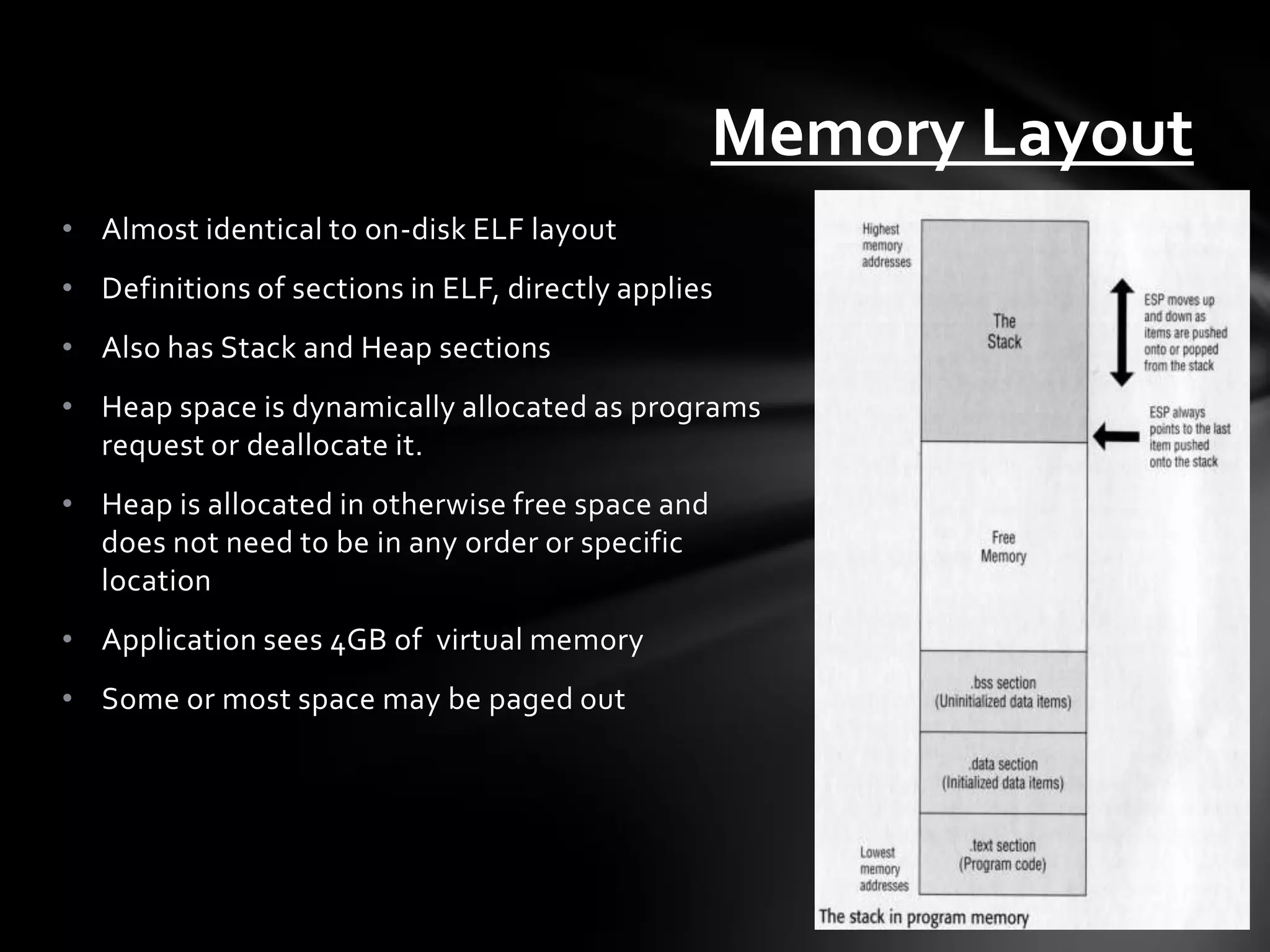
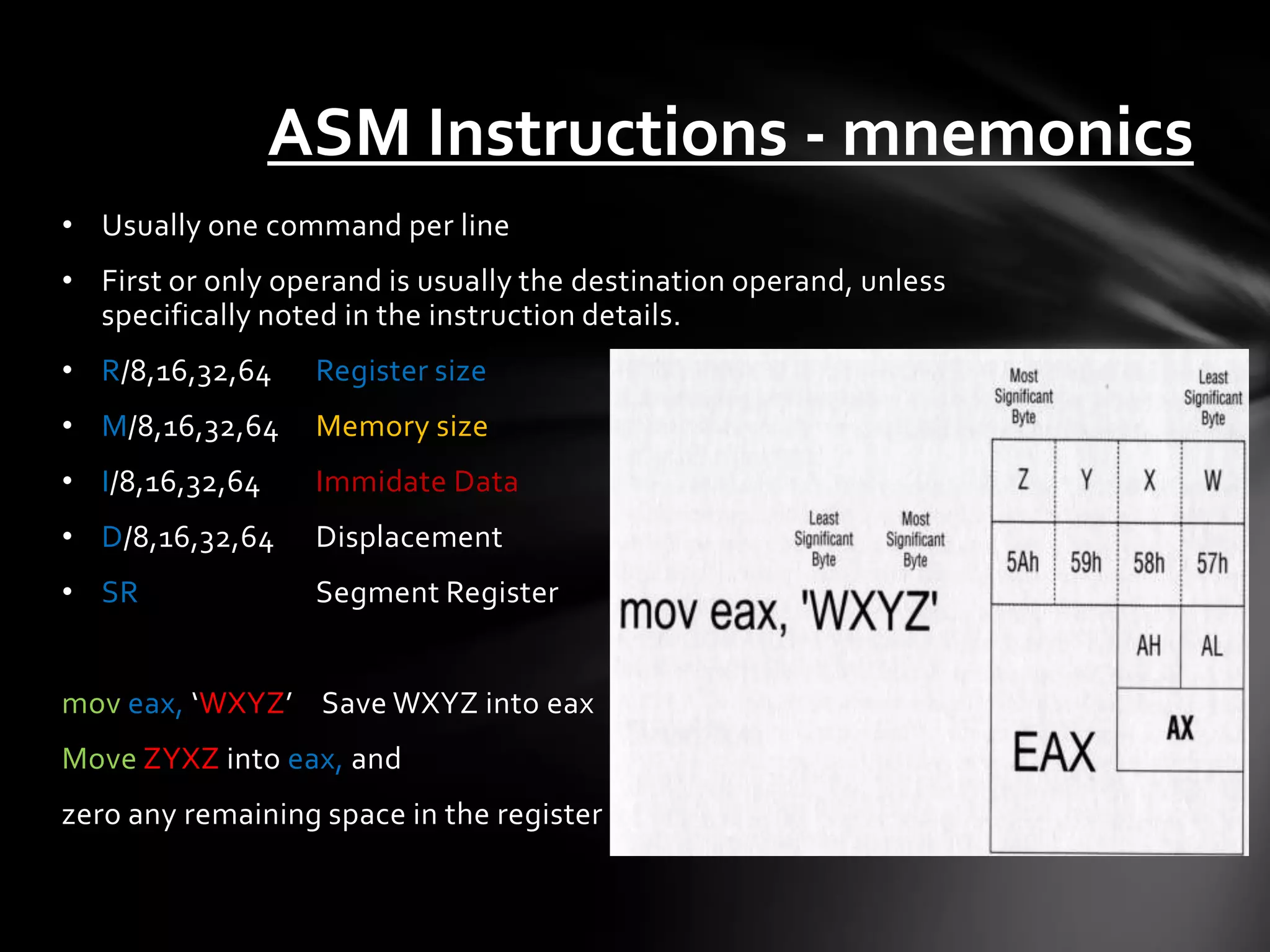
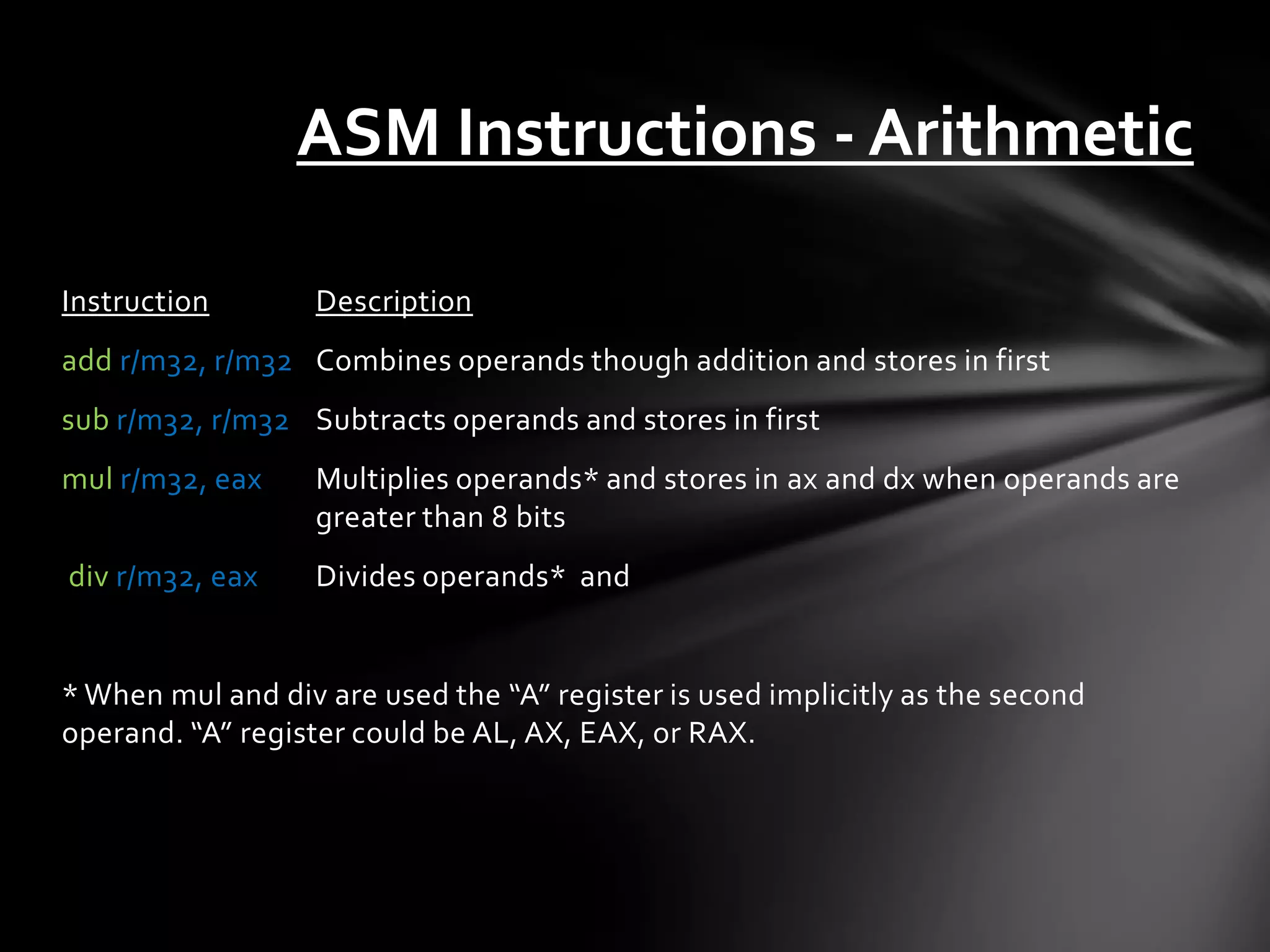
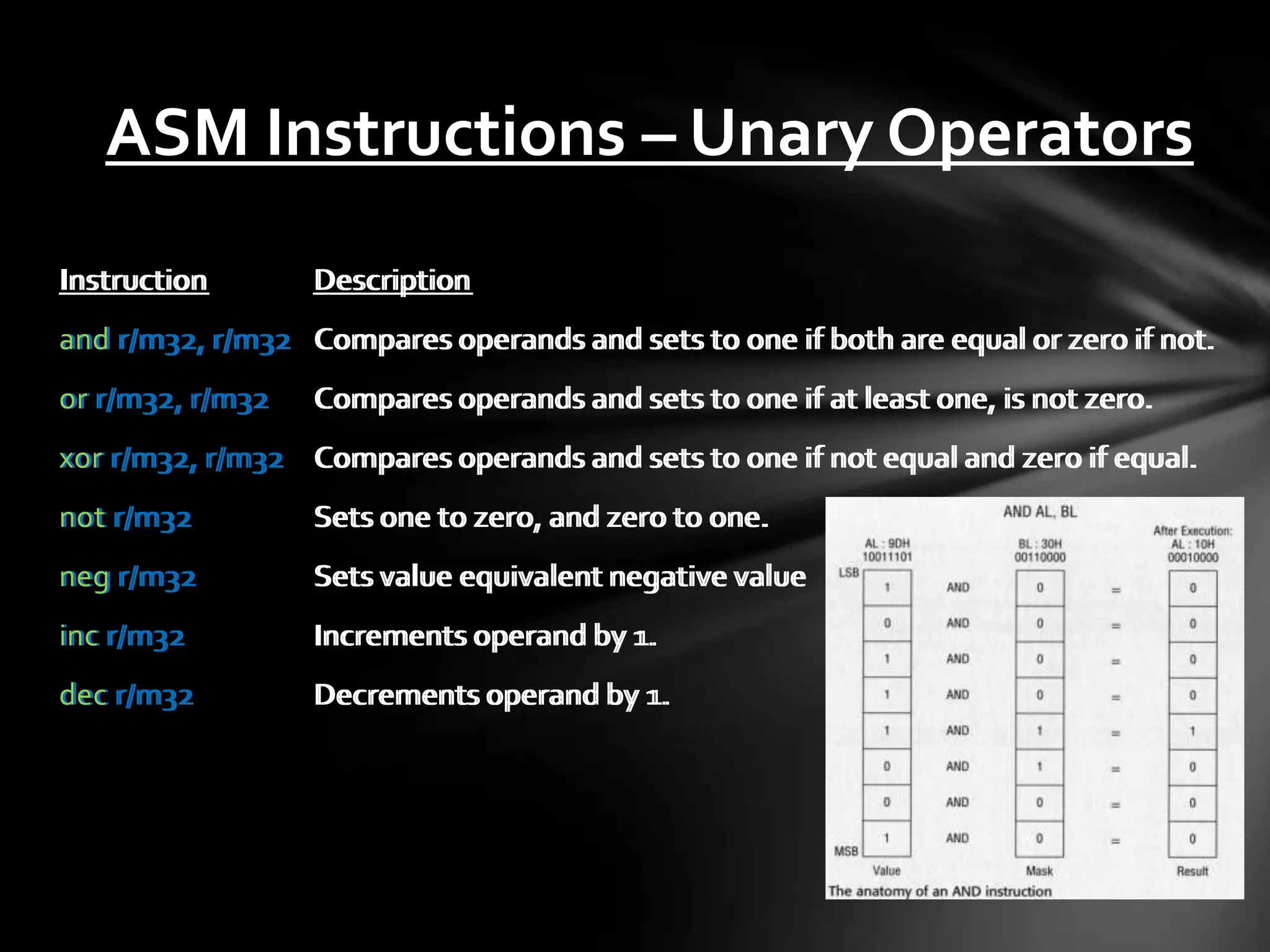
![ASM Instructions – Bit Manipulation
Instruction Description
shl r/m32, count Shifts bits left [count] times, stores overflow in CF, inserts zero
shr r/m32, count Shifts bits right [count] times, stores overflow in CF, inserts zero
rol r/m32, count Rotates bits from left and inserts on right, no CF use
ror r/m32, count Rotates bits from right and inserts on left, no CF use
rcl r/m32, count Rotates left to right, storing the first value rotated off,
and stored in CF, previous CF is set as right most value
rcr r/m32, count Rotates left to right, storing the first value rotated off,
and stored in CF, previous CF is set as right most value](https://image.slidesharecdn.com/introductiontodebugginglinuxapplications-120706111608-phpapp01/75/Introduction-to-debugging-linux-applications-18-2048.jpg)
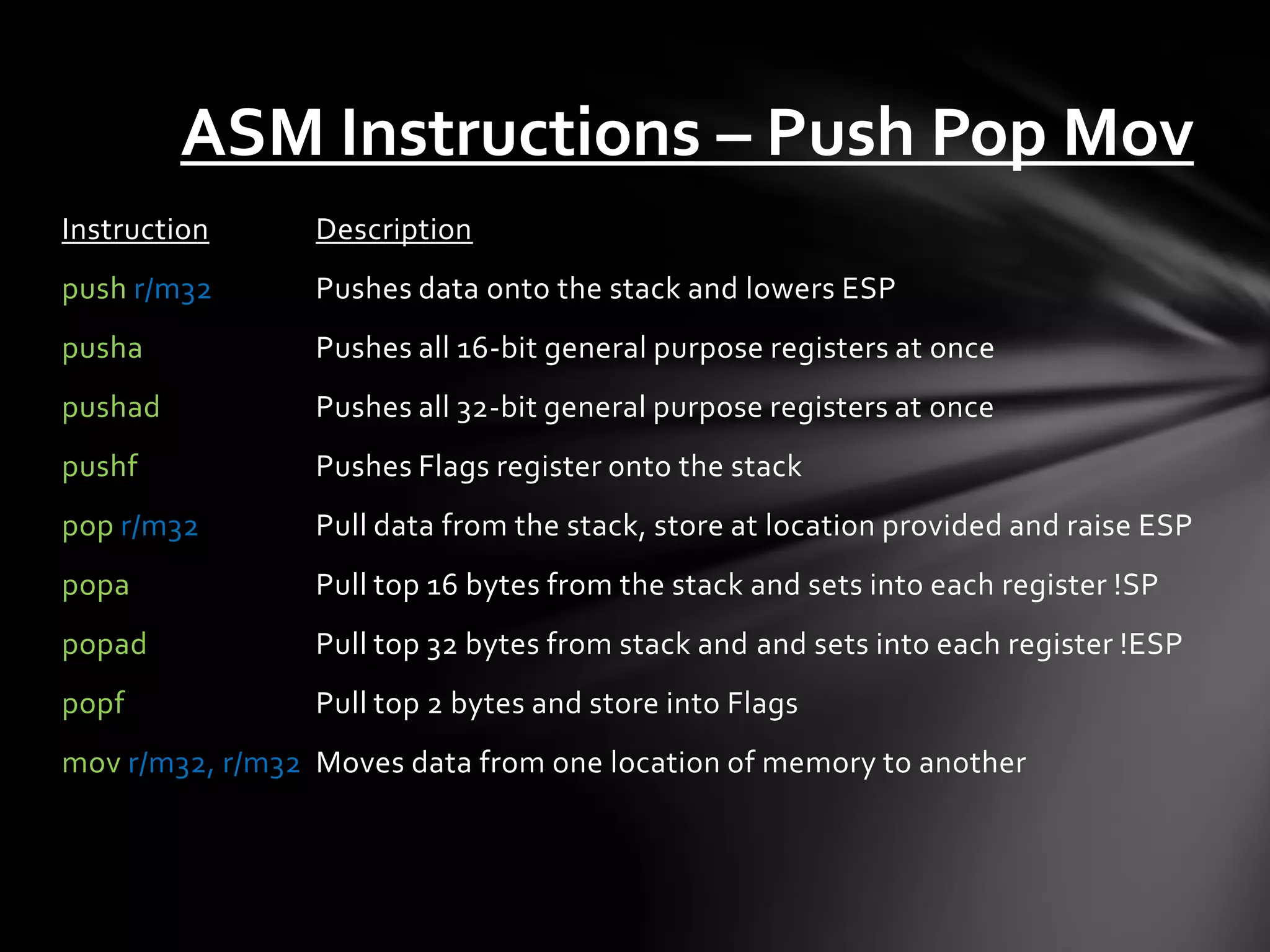
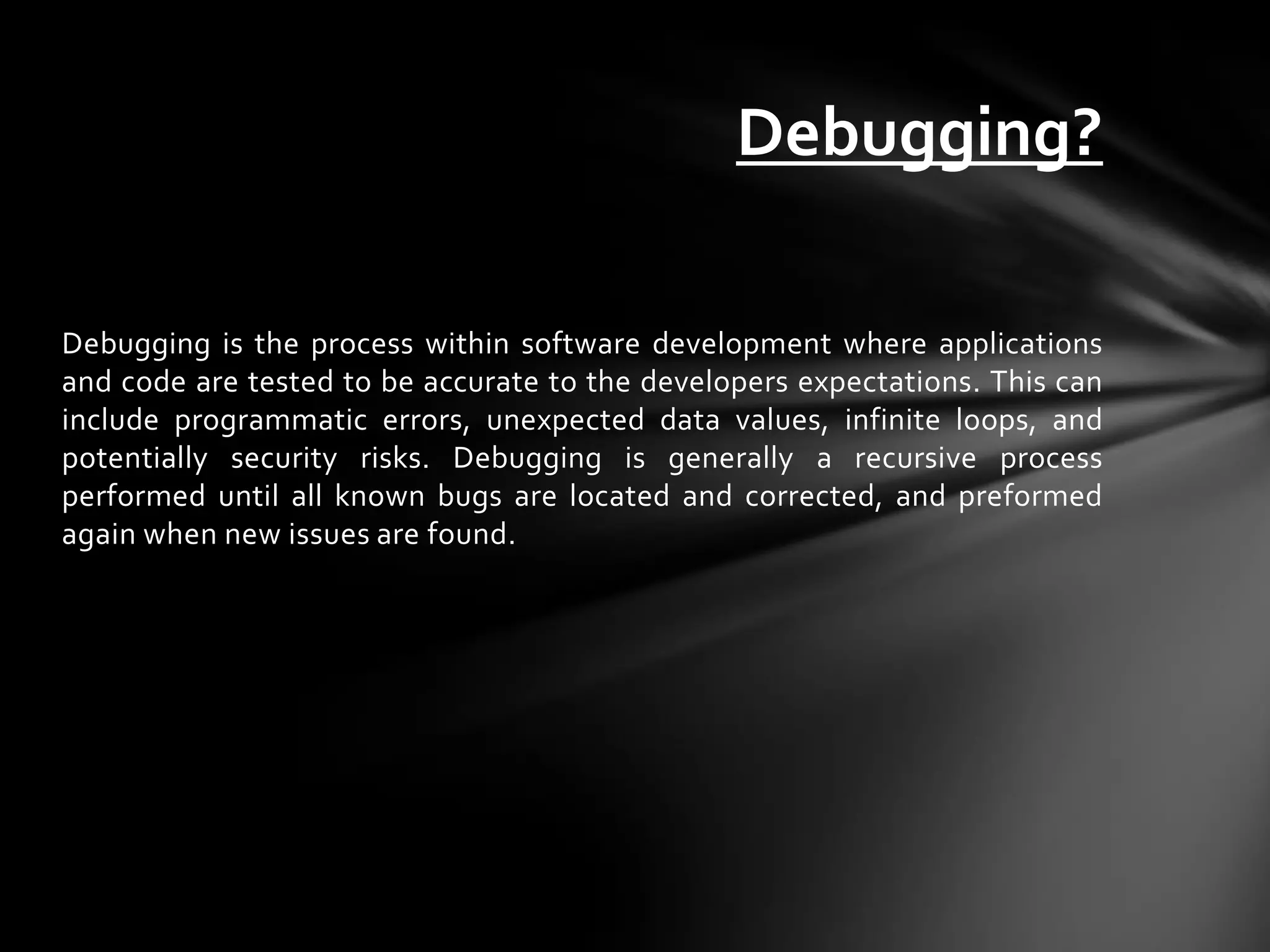

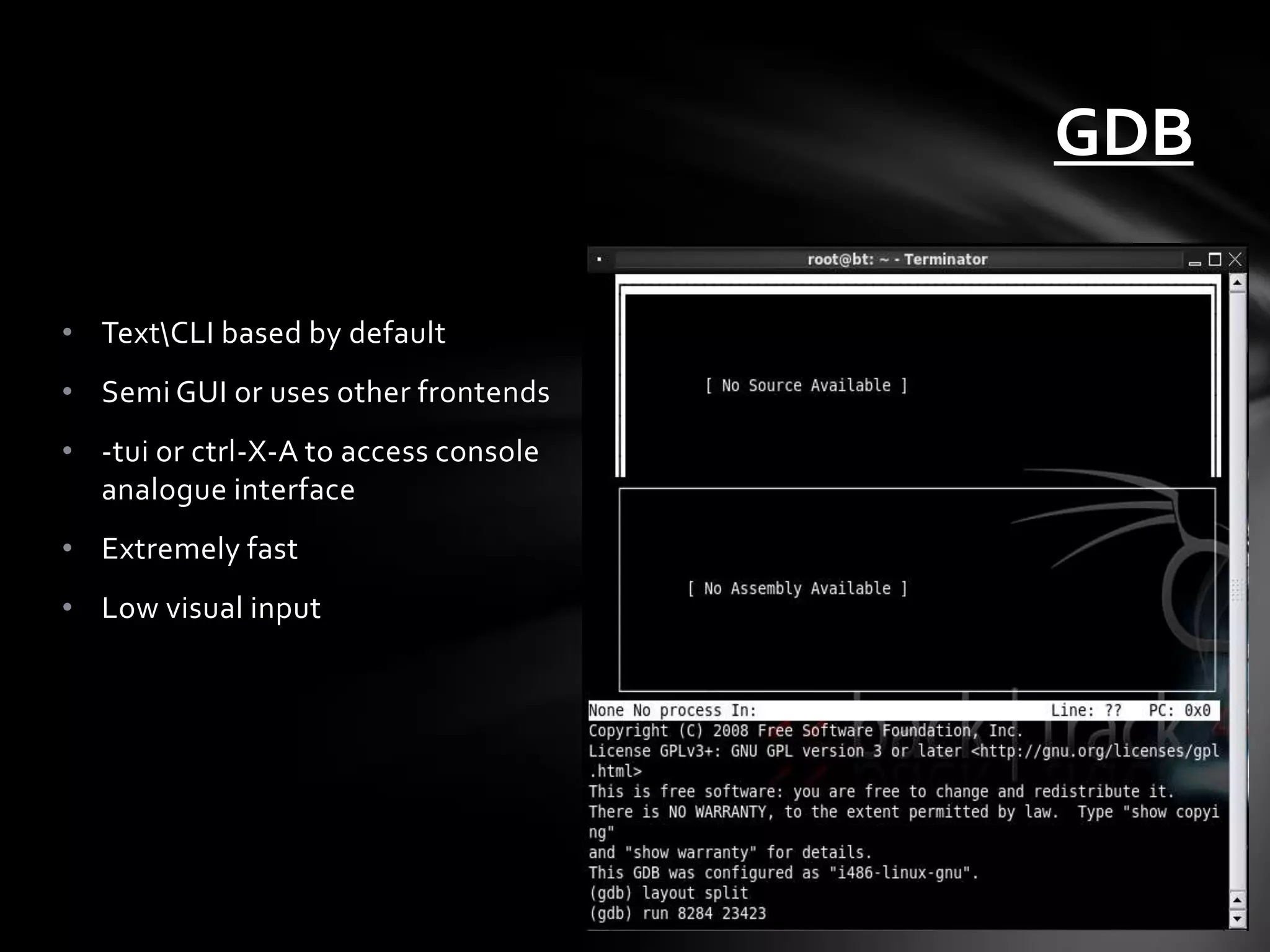
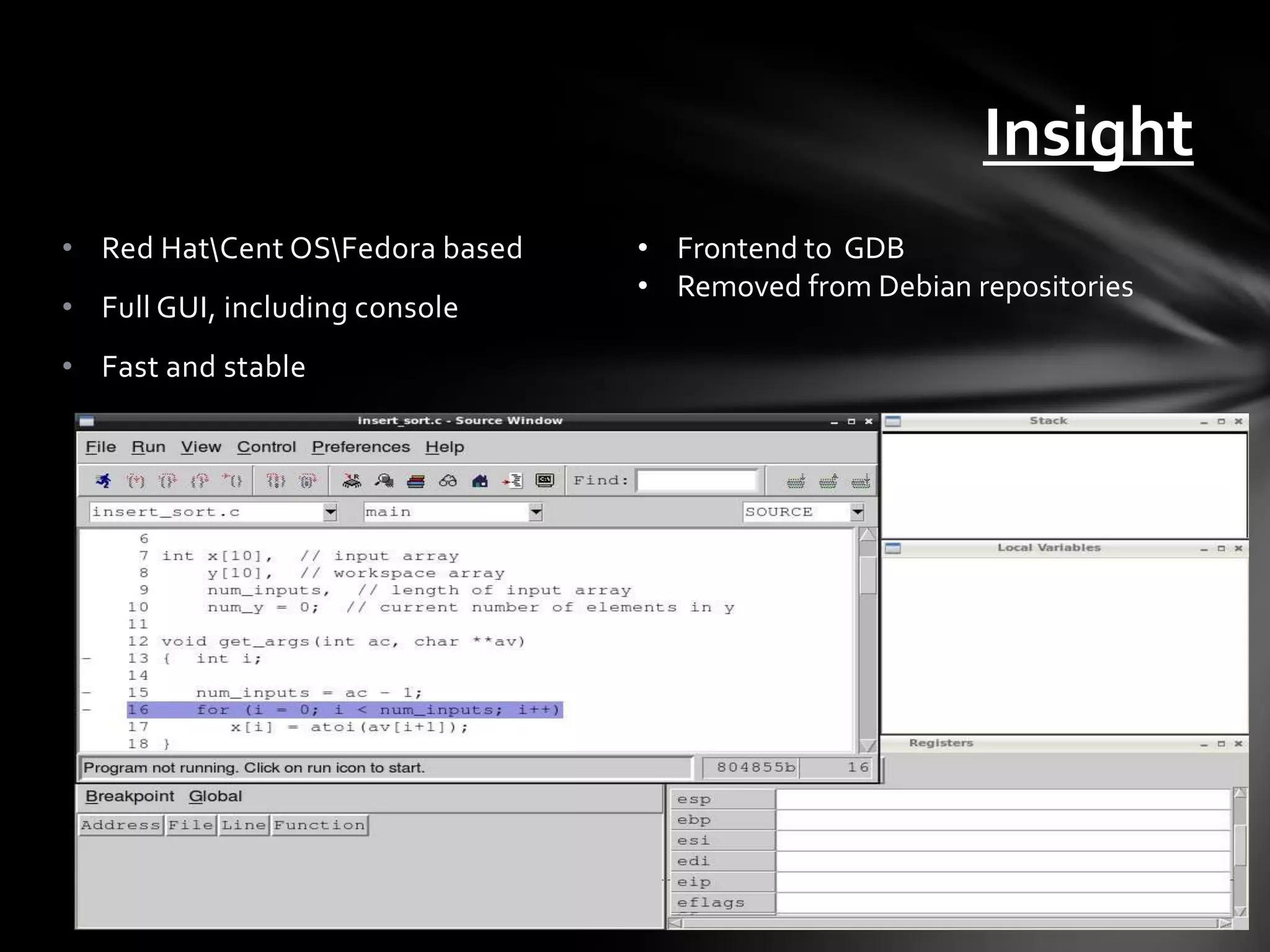
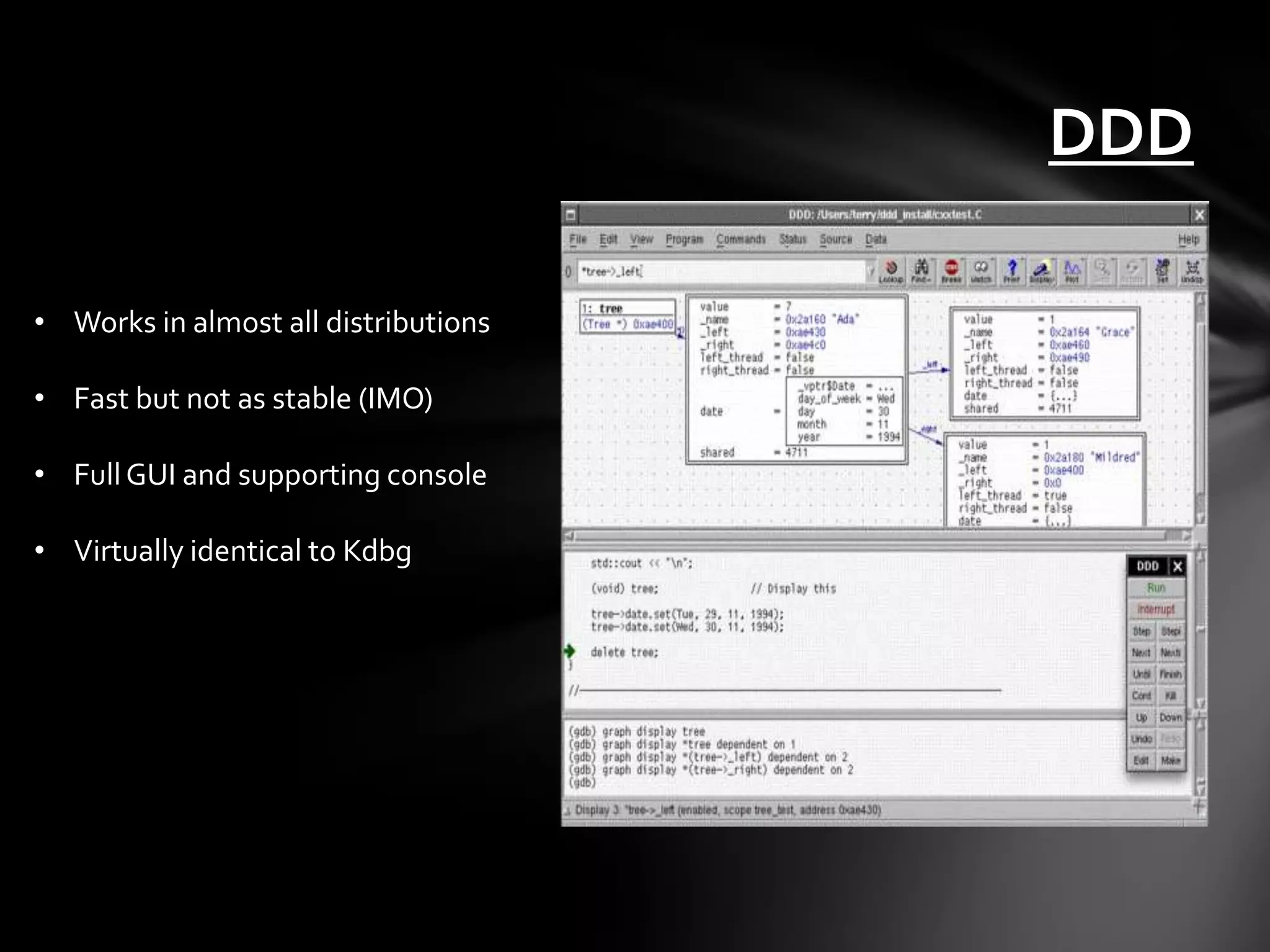
![GBD Commands
Instruction Description
-tui Used while starting for semi-gui
Break [line] Stops execution at set line and allows for inspection
Tbreak [line] Stops execution at set line the first time hit only
Watch [condition] Performs commands for condition arguments set
Print [variable] Displays a variables value while execution is stopped
Frame [number] Diplays trace of set stack frame
Backtrace Displays entire stack layout](https://image.slidesharecdn.com/introductiontodebugginglinuxapplications-120706111608-phpapp01/75/Introduction-to-debugging-linux-applications-25-2048.jpg)
![GDB Instructions
Run [arguments] Starts program execution with supplied arguments
Continue Continues normal execution after being paused
Step Executes line
Stepi Executes next ASMmachine instruction
Next Executes next line then pauses, skips over called
functions
Nexti Executes next ASMmachine instruction and pauses](https://image.slidesharecdn.com/introductiontodebugginglinuxapplications-120706111608-phpapp01/75/Introduction-to-debugging-linux-applications-26-2048.jpg)
